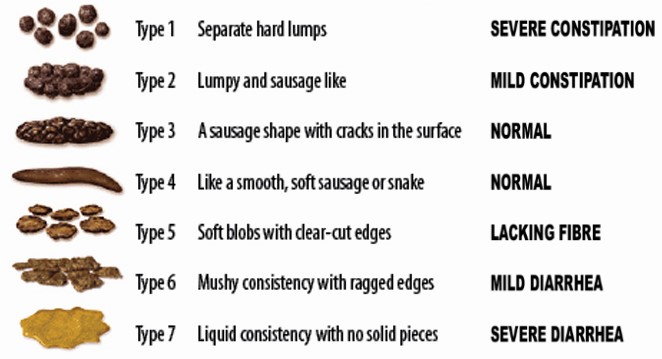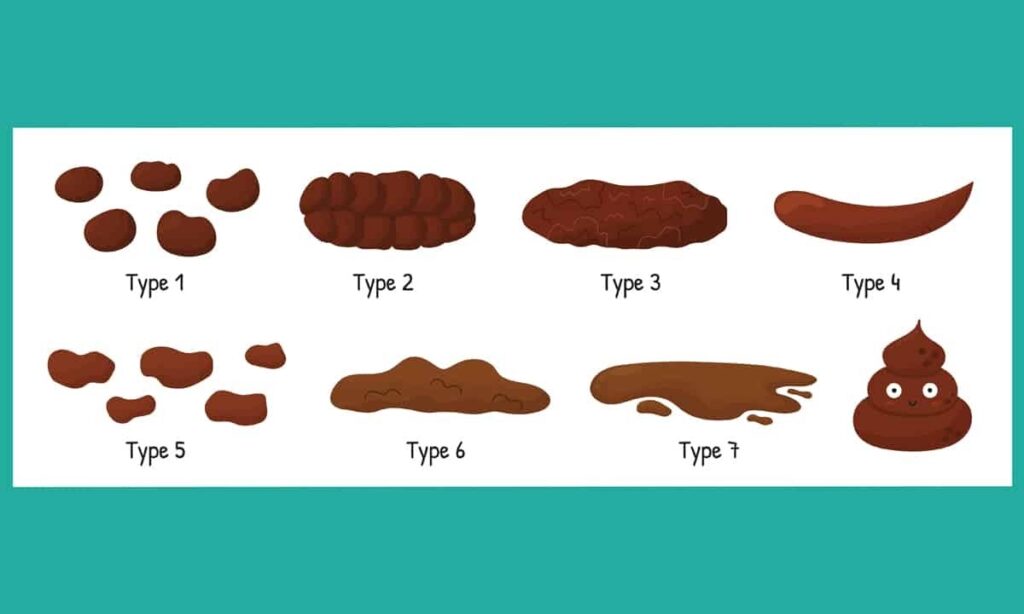The Bristol Stool Chart is a simple yet effective tool used to classify human stool into seven distinct types based on their appearance and consistency. Developed at the Bristol Royal Infirmary in the UK, this chart provides valuable insights into digestive health.
Understanding the Bristol Stool Chart and its implications can help you make dietary choices that promote a healthy digestive system. In this article, we will delve into what the Bristol Stool Chart is, what each stool type signifies, the importance of maintaining a normal stool type, and the foods that can aid in achieving this balance.

Table of Contents
What is the Bristol Stool Scale?
The Bristol Stool Chart is a diagnostic medical tool that categorizes feces into seven types, each represented by a different image and description. These types range from Type 1 (hard lumps) to Type 7 (watery diarrhea). It’s a quick and easy way for individuals to assess their bowel movements and discuss any concerns with healthcare professionals.
What Does Each Stool Type Mean?
- Type 1 (Separate Hard Lumps): This type indicates constipation, as the stool is hard, dry, and difficult to pass.
- Type 2 (Lumpy and Sausage-Like): Slightly better than Type 1 but still a sign of constipation. Stool forms into lumps and can be challenging to pass.
- Type 3 (Sausage-Like with Cracks): This is considered the ideal stool type. It’s smooth and soft but not liquid.
- Type 4 (Sausage-Like, Smooth, and Soft): Like Type 3, this is a healthy and normal stool type.
- Type 5 (Soft Blobs with Clear-Cut Edges): Although this type isn’t alarming, it’s bordering on diarrhea and may indicate mild bowel sensitivity.
- Type 6 (Fluffy Pieces with Ragged Edges): This stool is loose and could be a sign of mild diarrhea.
- Type 7 (Watery, No Solid Pieces): Watery stool represents diarrhea and suggests a rapid transit time in the colon.
Why Is It Important to Have a Normal Stool Type?
The consistency and appearance of stool can reveal crucial information about your digestive health. Achieving a normal stool type (Types 3 or 4) is essential because it indicates a healthy balance of water and fiber in your diet. Consistently abnormal stool types may indicate underlying digestive issues that require attention.
What Foods Can Help You Maintain a Normal Stool Type?
To achieve and maintain a healthy stool type, consider these dietary recommendations:
- Fiber-Rich Foods: Include plenty of fruits, vegetables, whole grains, and legumes in your diet. These foods add bulk to your stool and promote regular bowel movements.
- Hydration: Drink an adequate amount of water daily to keep your stool soft and easy to pass.
- Probiotic-Rich Foods: Incorporate probiotics like yogurt, kefir, and fermented foods to support gut health.
- Healthy Fats: Omega-3 fatty acids found in fatty fish, flaxseeds, and walnuts can contribute to stool regularity.
What Foods to Avoid?
- Highly Processed Foods: Limit your intake of processed foods, as they are often low in fiber and can lead to irregular bowel movements.
- Excessive Red Meat: Consuming too much red meat may slow digestion, leading to harder stools.
- Dairy Products for Lactose-Intolerant Individuals: If you’re lactose intolerant, dairy products can cause digestive distress and irregular stools.

Understanding the Bristol Stool Chart and its implications for your digestive health is essential for overall well-being. Aiming for a normal stool type (Types 3 or 4) through a balanced diet rich in fiber, hydration, and gut-friendly foods can help maintain a healthy digestive system.
Regularly monitoring your stool type and consulting a healthcare professional if you notice consistent abnormalities is a proactive step toward digestive wellness.


